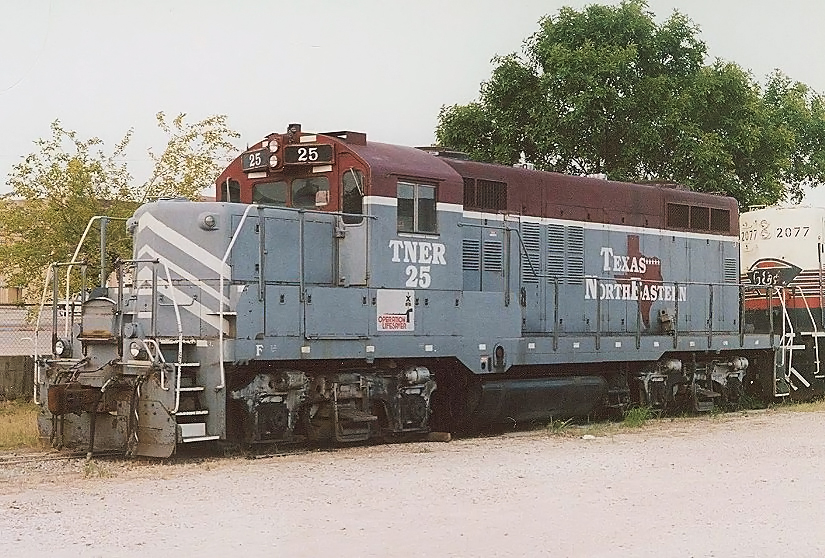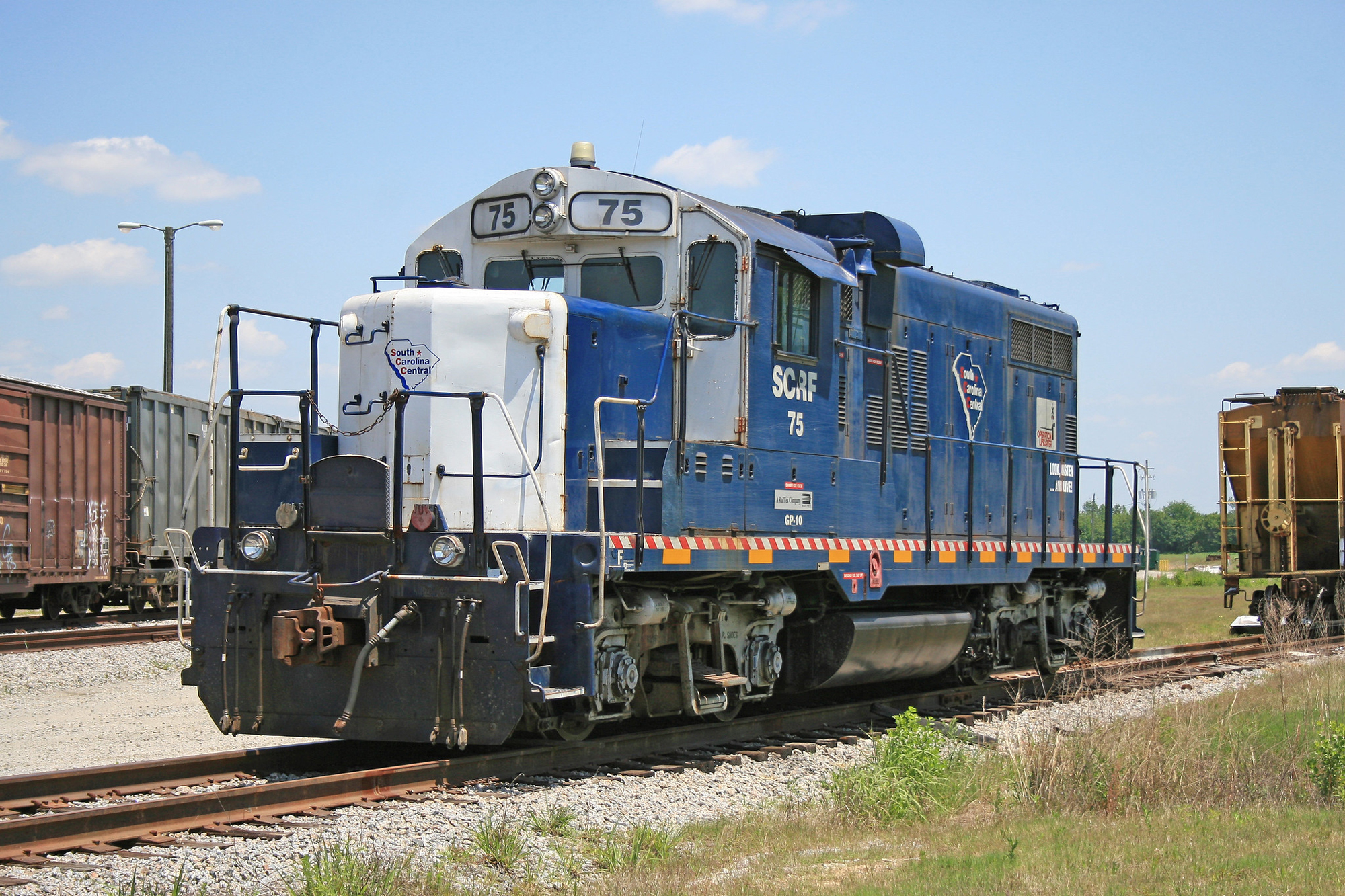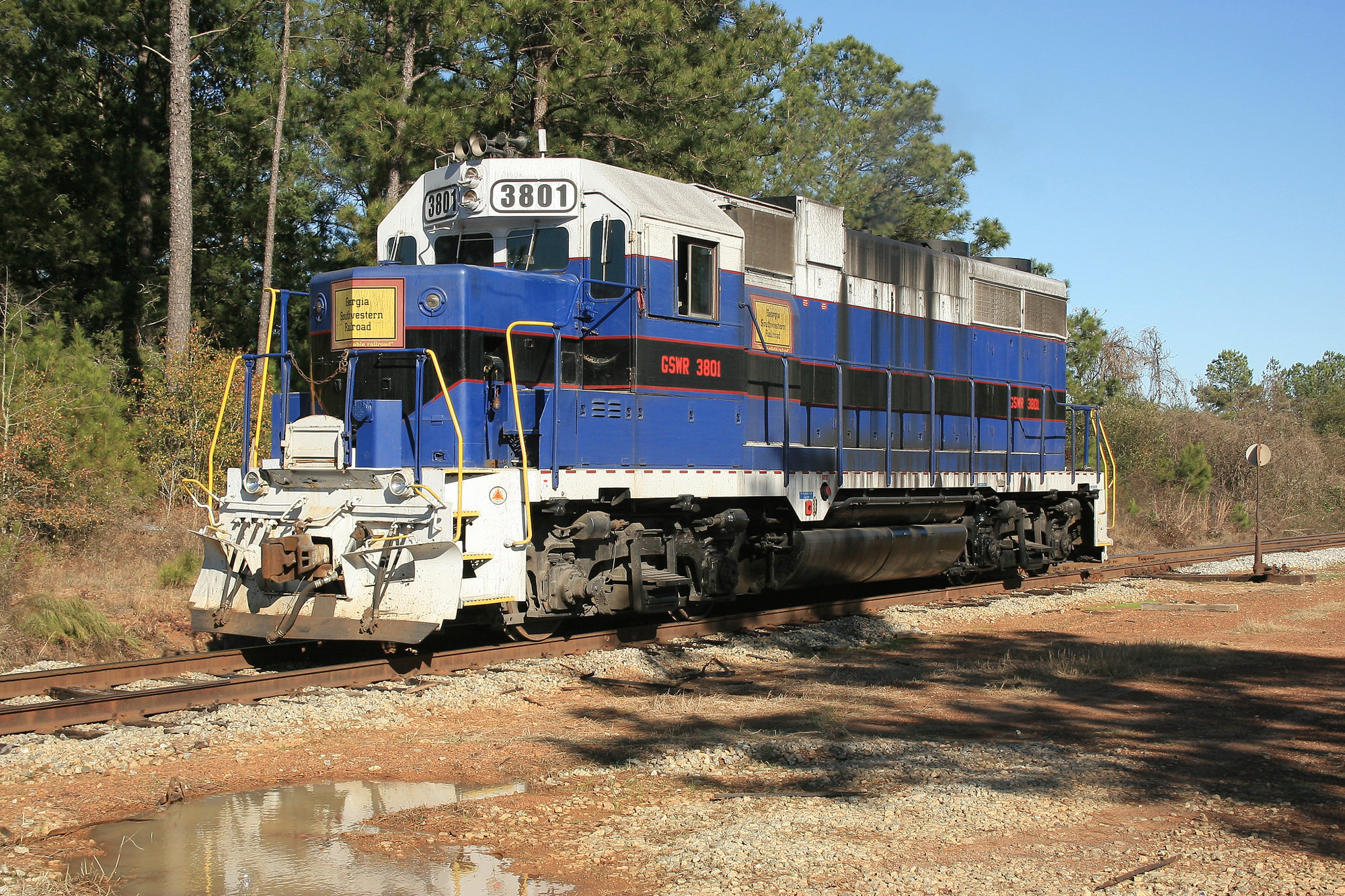- Home ›
- Short Lines ›
- RailTex
RailTex: A Short Line Giant In The 1990s
Published: August 5, 2024
By: Adam Burns
Railtex, Inc. standsw as a testament to entrepreneurial vision and strategic growth within the short line railroad sector.
Founded in 1977 and acquired by RailAmerica in 2000, Railtex played a pivotal role in reinvigorating secondary lines and branches that would have otherwise been abandoned by Class 1s throughout the 1980s and 1990s.
Today, many of these continue to provide critical transportation needs to small towns and communities throughout the United States. This article delves into the key milestones, growth strategies, and Railtex's eventual integration into RailAmerica's expansive portfolio.
 Texas Northeastern GP9u #25 is at Sherman, Texas on June 29, 2002. The TNER was formed in 1990 when the UP sold off this ex-MP line to Railtex. The trackage ran from Texarkana west to Sherman with branches to Dennison and Trenton. Doug Kroll photo.
Texas Northeastern GP9u #25 is at Sherman, Texas on June 29, 2002. The TNER was formed in 1990 when the UP sold off this ex-MP line to Railtex. The trackage ran from Texarkana west to Sherman with branches to Dennison and Trenton. Doug Kroll photo.Early Beginnings
RailTex, founded by Bruce Flohr in December 1977, began as a rail car leasing business. Flohr, who initially invested $50,000 of his own money and raised another $50,000 from investors, had a rich railroad background.
He was a veteran of the railroad industry who began his career as a brakeman with Southern Pacific in 1965, eventually becoming the superintendent of the San Antonio Division before serving as the deputy administrator of the Federal Railroad Administration in 1975.
The 1980s marked a period of significant growth for Railtex. The company took advantage of regulatory changes, particularly the Staggers Rail Act of 1980, which deregulated the beleagured rail industry, allowing for more flexible rate-setting and streamlined the process for abandoning unprofitable lines.
Flohr envisioned the potential of short line railroads as a viable business model beyond car leasing. Railtex began as an endeavor to acquire and operate these marginalized yet essential pieces of the rail network.
Railtex emphasized operational efficiency and customer service, two factors that would later become essential components of the company’s success. The acquisition of small lines that were otherwise neglected allowed Railtex to offer dependable and customized service to regional customers.
Its first short line was the San Diego & Imperial Valley Railroad created in March, 1984, when RailTex signed an agreement with Metropolitan Transit Development Board (known as the Metropolitan Transit System after 2005) to operate freight service across its San Diego and Arizona Eastern Railway.
Keys To Success
The SD&IV laid the groundwork for a series of strategic takeovers, driven by a clear and innovative formula:
1. **Non-Union Operations**: RailTex only took over railroads where it could operate on a non-union basis. This allowed the company to run trains with just two employees earning $10 to $15 per hour, compared to union operations which employed three to four workers at an average of $25 per hour. RailTex employees were uniquely designated as transportation specialists or "transpecs."
2. **Aggressive Marketing**: The company employed three marketing managers per line—more than the industry norm—and targeted businesses within a five to ten-mile radius of the track, rather than just those adjacent to it.
3. **Cost-Effective Equipment**: RailTex strategically purchased older locomotives, paying a fraction of the cost of new ones, to maintain financial efficiency.
Expansion and Growth
By the late 1980s and into the 1990s, Railtex's portfolio of railroads had expanded substantially. The company primarily focused on lines that served industrial regions, agricultural areas, and ports—vital links in the supply chain that were often inadequately serviced by larger railroads. By catering to the specific needs of these customers, Railtex improved service reliability and fostered strong business relationships.
Prominent Acquisitions and Operations
Among its various acquisitions, a few stand out as particularly transformative in shaping Railtex’s reputation and operational scope. One notable acquisition was the South Carolina Central Railroad located in its home state.
The short line's routes were of Seaboard Air Line and Atlantic Coast Line heritage. The oldest segment of the line originally extended from Cheraw through Society Hill and Floyd, concluding at Florence.
Another segment, stretching from Hartsville to Bishopville, was initially part of the Seaboard Air Line before its merge with the Atlantic Coast Line in 1967, forming the Seaboard Coast Line.
The SCL became part of the Seaboard System in 1983 and eventually CSX Transportation in 1986. On December 1, 1987, CSX sold both segments to RailTex. The acquisition resulted in two disconnected tracks: one running from Cheraw to Society Hill, spanning 12 miles, and another from Florence to Bishopville, stretching 42.4 miles.
In its early years, the South Carolina Central encompassed four distinct divisions operating independently from its northeastern South Carolina routes. Acting as a holding company, SCC managed the Georgia & Alabama, Georgia Southwestern, Carolina Piedmont, and Georgia Great Southern railroads, expanding its influence and operational breadth within the rail industry.
Another significant addition was the North Carolina & Virginia Railroad. The short line was established in November 1987 through RailTex's acquisition of 52 miles of former Seaboard Coast Line Railroad trackage from CSX Transportation, spanning from Boykins, Virginia to Tunis in Cofield, North Carolina.
As part of this transaction, CSX included two GP9s, although by 1988, only one of these locomotives, built in 1957, was in active service. The company began its operations with a staff of six employees and established its headquarters in Ahoskie, North Carolina. By 2008 the NC&VA boasted carloadings of 25,000.
Railtex's management style was hands-on and community-oriented. By maintaining close connections with local businesses and governments, the company ensured that its services met the unique demands of the regions in which it operated. This approach not only improved operational efficiency but also led to increased profitability and customer satisfaction.
Public Offering and Subsequent Growth
By 1986, RailTex had acquired its second short line, the Austin & Northwestern Railroad. Three years later, it divested its rail car business to Chrysler, concentrating all efforts on railroad operations. By 1991, RailTex managed 1,500 miles of track across 12 states with a fleet of 60 locomotives.
The early 1990s was another important decade for Railtex as the company went public on the NASDAQ stock exchange in 1993. The initial public offering (IPO) provided the capital necessary to finance further acquisitions and technological enhancements. The public listing also brought increased visibility and credibility, positioning Railtex as a key player in the rail industry.
Utilizing the capital raised from public investors, Railtex embarked on an aggressive expansion campaign throughout this time.
In 1996, it expanded internationally by joining a consortium with Companhia Vale do Rio Doce to win a concession for operating Brazil's 4,400-mile Center Eastern Network. Later that year, partnering with GP Investments, RailTex secured another concession for the Southern Network. However, by 1999, these Brazilian interests were sold.
Through innovative strategies and strategic acquisitions, RailTex grew from a modest leasing business into a significant player in the short line railroad industry, eventually attracting the attention of RailAmerica with its successful model.
 South Carolina Central GP10 #75 (an ex-Illinois Central Paducah rebuild) lays over at the main yard in Floyd, South Carolina on May 19, 2007. Doug Kroll photo.
South Carolina Central GP10 #75 (an ex-Illinois Central Paducah rebuild) lays over at the main yard in Floyd, South Carolina on May 19, 2007. Doug Kroll photo.Acquisition by RailAmerica
The culmination of Railtex’s growth and success came in 2000 when it was acquired by RailAmerica, Inc. for $208 million for cash and stock. RailAmerica, another giant in the railroad industry, recognized the value in Railtex’s extensive network of short lines and its reputation for operational excellence.
The acquisition marked the end of Railtex as an independent entity but ensured that its legacy would continue under the RailAmerica umbrella.
The integration into RailAmerica allowed for the consolidation of operations, expansion of service offerings, and further investment in infrastructure and technology. RailAmerica continued to operate the former Railtex lines successfully, maintaining the high standards set by Railtex.
Legacy and Impact
The historical significance of Railtex, Inc. lies in its strategic approach to revitalizing short line railroads and its contributions to the broader rail industry. By focusing on efficiency, customer service, and community engagement, Railtex set a new benchmark for how short line railroads could operate profitably and sustainably.
Railtex demonstrated that with the right management and strategic vision, small and medium-sized railroads could play a crucial role in the transportation ecosystem, providing critical links between local businesses and the national rail network.
The company's successful integration into RailAmerica further cemented its impact, ensuring that its best practices and operational philosophies continued to influence the industry.
Railroad Holdings
- Carolina Piedmont Railroad
- Central Oregon and Pacific Railroad
- Central Railroad of Indiana
- Central Railroad of Indianapolis
- Chesapeake & Albemarle Railroad
- Connecticut Southern Railroad
- Dallas, Garland & Northeastern Railroad
- Georgia Southwestern Railroad
- Goderich-Exeter Railway
- Grand Rapids Eastern Railroad
- Indiana & Ohio Central Railroad
- Indiana & Ohio Railway
- Indiana Southern Railroad
- Michigan Shore Railroad
- Mid-Michigan Railroad
- Missouri & Northern Arkansas Railroad
- New England Central Railroad
- North Carolina & Virginia Railroad
- Ontario L'Orignal Railway
- Pittsburgh Industrial Railroad
- San Diego & Imperial Valley Railroad
- South Carolina Central Railroad
- Texas-New Mexico Railroad
- Texas Northeastern Railroad
- Virginia Southern Railroad
 Georgia Southwestern GP38 #3801 is switching at Dawson, Georgia on December 12, 2008. The GSWR was created by Railtex in 1988, then bought back from Rail America in 2002 by local interests. They were so successful that the line was sold in late 2008 to Genesee & Wyoming. Doug Kroll photo.
Georgia Southwestern GP38 #3801 is switching at Dawson, Georgia on December 12, 2008. The GSWR was created by Railtex in 1988, then bought back from Rail America in 2002 by local interests. They were so successful that the line was sold in late 2008 to Genesee & Wyoming. Doug Kroll photo.Conclusion
Railtex, Inc. stands as an exemplary case of entrepreneurial spirit and strategic growth within the American rail sector.
From its modest beginnings in 1977, through periods of rapid expansion in the 1980s and 1990s, to its acquisition by RailAmerica in 2000, Railtex's history is characterized by innovation, resilience, and a commitment to operational excellence.
Its legacy serves as a model for how focused vision and strategy can revive and sustain critical transportation infrastructure.
Recent Articles
-
New Mexico Railroad Museums: A Complete Guide
Apr 23, 25 02:25 PM
The enchanting state of New Mexico, known for its vivid landscapes and rich cultural heritage, is home to a number of fascinating railroad museums. -
New Hampshire Railroad Museums: A Complete Guide
Apr 23, 25 02:11 PM
New Hampshire, known for its breathtaking landscapes, historic towns, and vibrant culture, also boasts a rich railroad history that has been meticulously preserved and celebrated across various museum… -
Minnesota Railroad Museums: A Complete Guide
Apr 22, 25 12:17 PM
The state of Minnesota has always played an important role with the railroad industry, from major cities to agriculture. Today, several museums can be found throughout the state.